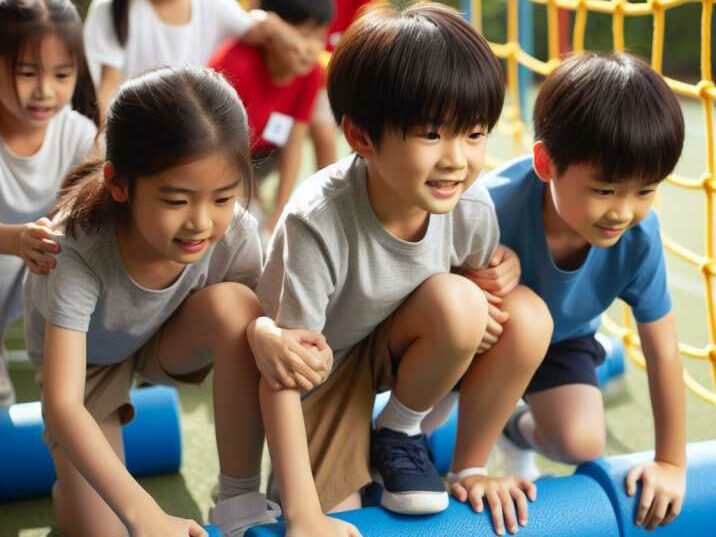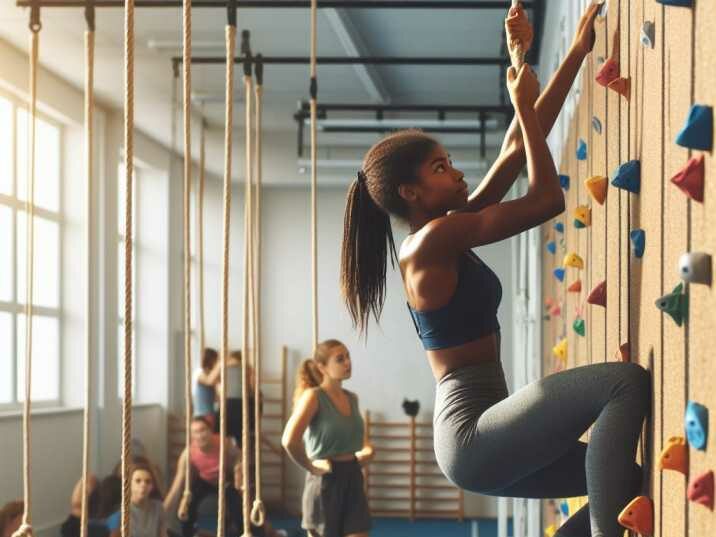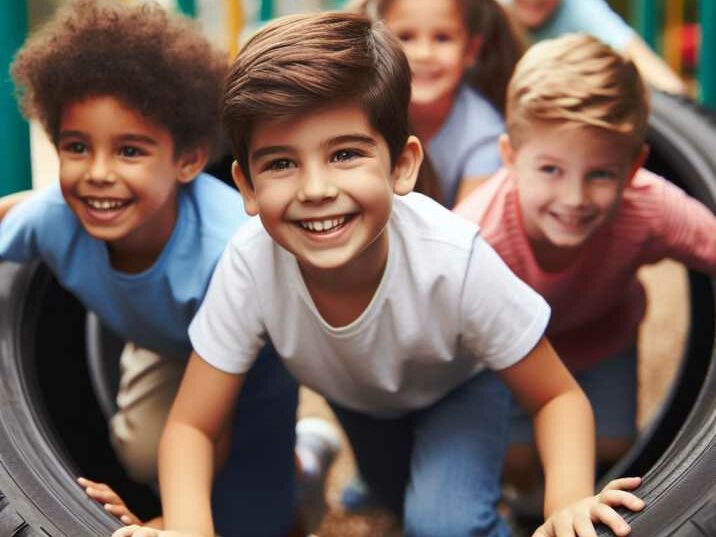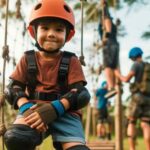The Impact of Obstacle Courses in Schools
Table of Contents
Introduction:
Physical education plays a crucial role in shaping a child’s overall development, fostering a love for physical activity and promoting a healthy lifestyle. In recent years, the incorporation of obstacle courses into school physical education programs has gained momentum. This blog post explores the numerous advantages and considerations associated with integrating obstacle courses into the curriculum.
Why Obstacle Courses Matter:
The Importance of Physical Activity
In an era dominated by screens and sedentary lifestyles, the significance of physical activity cannot be overstated. Integrating obstacle courses provides a dynamic and engaging way to get students moving.
Fostering Teamwork and Collaboration
Obstacle courses inherently encourage teamwork and collaboration. Whether it’s navigating through a tire tunnel or scaling a climbing wall, students learn to communicate effectively and work together to overcome challenges.

The Impact of Obstacle Courses in Schools:
Physical Fitness and Skill Development
Obstacle courses target a range of physical skills, including strength, flexibility, coordination, and endurance. This multifaceted approach ensures a well-rounded physical education experience.
Cognitive Development
Beyond physical benefits, navigating obstacle courses enhances cognitive skills. Students must strategize, problem-solve, and make quick decisions, contributing to their overall cognitive development.
Building Confidence and Resilience
Conquering obstacles fosters a sense of accomplishment, boosting students’ self-esteem and resilience. Overcoming challenges in a controlled environment prepares them to face life’s hurdles with confidence.

Integrating Obstacle Courses into School Physical Education Programs:
Curriculum Integration
Incorporating obstacle courses into the existing physical education curriculum requires careful planning. Teachers can align obstacle course activities with specific fitness goals and incorporate them into weekly lesson plans.
Adaptability for Different Age Groups
Obstacle courses can be tailored to suit various age groups, ensuring that the challenges are both age-appropriate and enjoyable. From primary to high school, students of all ages can benefit from these activities.
Transitioning to a Healthier Future:
Long-Term Impact on Lifestyle Choices
By exposing students to enjoyable and challenging physical activities, schools contribute to the development of lifelong fitness habits. The lessons learned on the obstacle course extend far beyond the school gates.
Community and Parental Involvement
To enhance the impact of obstacle courses in schools, schools can involve the community and parents. Hosting obstacle course events or workshops allows for collaboration and support from the broader community.

Conclusion:
The Impact of obstacle courses in schools physical education programs is a transformative approach to promoting holistic development among students. From physical fitness to teamwork and cognitive skills, the benefits are vast. By embracing this innovative method, schools pave the way for a healthier, more active future generation.
In conclusion, obstacle courses offer a dynamic solution to the challenges of modern sedentary lifestyles. Through thoughtful integration into physical education programs, schools can inspire students to embrace an active lifestyle, setting the stage for lifelong health and well-being.
FAQs:
1. What are the key benefits of incorporating obstacle courses into school physical education programs?
Obstacle courses offer a diverse range of benefits, including improved physical fitness, enhanced teamwork, cognitive development, and increased confidence.
2. Are obstacle courses suitable for all age groups in a school setting?
Yes, obstacle courses can be adapted to suit various age groups, ensuring that the challenges are age-appropriate and enjoyable for all students.
3. How can teachers seamlessly integrate obstacle courses into their existing physical education curriculum?
Teachers can align obstacle course activities with specific fitness goals and incorporate them into weekly lesson plans. The key is careful planning and curriculum integration.
4. Do obstacle courses require special equipment, or can they be set up with readily available resources?
While certain obstacle courses may utilize specialized equipment, many can be created using readily available resources like cones, ropes, and climbing structures.
5. How do obstacle courses contribute to cognitive development in students?
Navigating obstacle courses requires students to strategize, problem-solve, and make quick decisions, promoting cognitive development alongside physical skills.
6. Can obstacle courses be incorporated into school events or workshops for community involvement?
Absolutely! Hosting obstacle course events or workshops can involve the community and parents, fostering collaboration and support.
7. Are there safety considerations when implementing obstacle courses in schools?
Safety is paramount. Teachers and school staff should undergo appropriate training, and obstacle courses should be designed with safety measures in place to minimize risks.
8. How can schools ensure inclusivity when integrating obstacle courses?
Teachers should consider adapting obstacle courses to accommodate different abilities, ensuring inclusivity for all students. Collaboration with special education professionals can be beneficial.
9. Can obstacle courses be used as a form of physical education assessment?
Yes, obstacle courses provide an engaging way to assess various physical skills and track students’ progress in a dynamic and practical manner.
10. How often should schools incorporate obstacle courses into their physical education programs?
The frequency of incorporating obstacle courses depends on the school’s curriculum and goals. However, integrating them periodically throughout the school year can provide ongoing benefits.
11. Are there any success stories or case studies showcasing the positive impact of obstacle courses in schools?
Numerous success stories and case studies highlight the positive impact of obstacle courses, demonstrating improved physical fitness, teamwork, and overall student well-being.
12. How can schools encourage parental involvement in supporting obstacle course initiatives?
Schools can organize information sessions, workshops, or events that showcase the benefits of obstacle courses, encouraging parents to actively support and participate in their child’s physical education journey.


